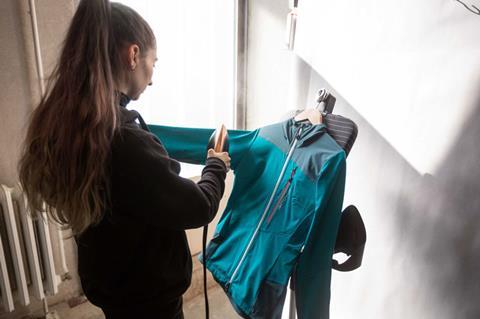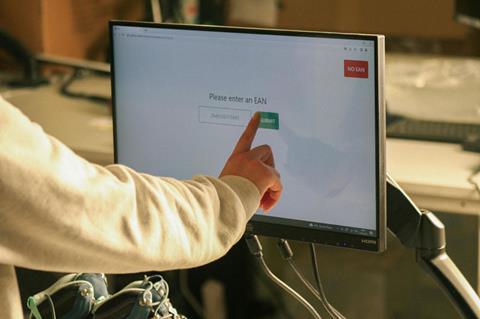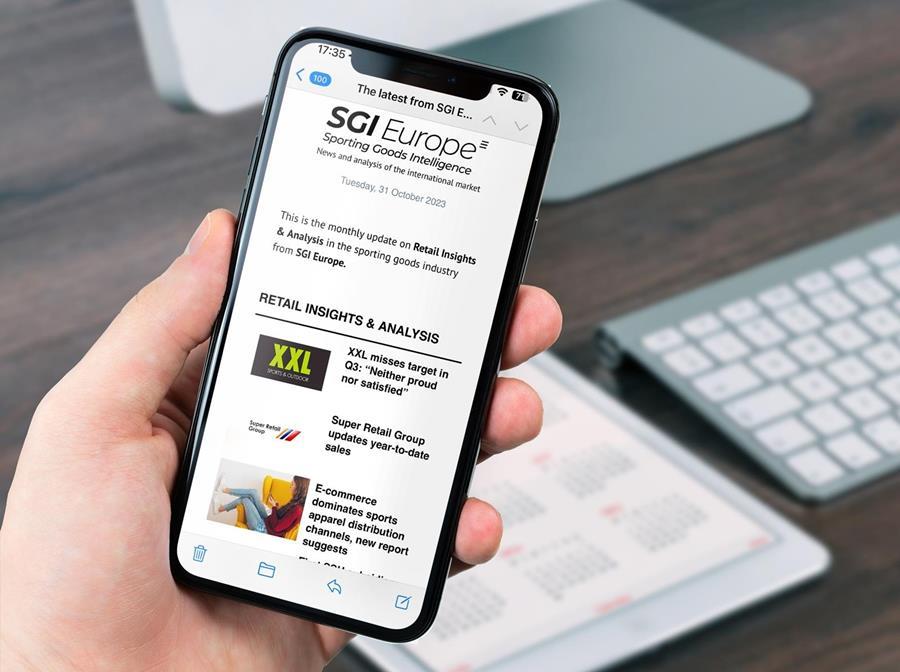If you want to start selling secondhand goods, you may find yourself in a dilemma: On the one hand is the seller, who wants to get the highest possible price for their used product; on the other hand is the buyer, who naturally wants to pay as little as possible for secondhand products. How do you, as a secondhand retailer, find the right price and still make money?
We asked Janis Künkler, co-CEO of the Berlin-based start-up Reverse.Supply, which operates the secondhand business of outdoor retailers and brands such as Bergzeit, Globetrotter and Ortovox, and as of August this year Decathlon Germany, for some advice.
Resale pricing decisions often start with looking at the brand
SGI Europe: As a secondhand provider, you’re always occupying a position between the seller and the buyer. How do you find the right price?

Janis Künkler: In the secondhand market, we deal with unique items, so we have complete price leadership. That’s one of our core competencies and a quality we provide to our partners.
To determine the price, we look at various external factors, starting with the brand. How does that brand perform in sales on other secondhand platforms? On these, we see the price at which comparable products are sold. We are competing with these platforms. That is, I cannot offer too low a purchase price to secure an item, otherwise I will not get the product.
On peer-to-peer platforms, you can usually sell used clothing more expensively than through a secondhand dealer. I have to take that into account too. Balancing all the factors is indeed a challenge. That’s why we developed our software, which helps to understand and control when I buy goods, how and at what price, and how I can then sell them again.
So, in summary, I have to form an attractive purchase price, add our costs and the margin, then our partners also want to earn something, and from that I get a selling price. Of course, this price has to be realistically achievable. In addition, we have to keep room for maneuver in order to make any possible discounts.
What exactly are the factors that go into pricing?
Firstly, the brand, how is it doing on other platforms? Then, we have sales data from the brand partners and retailers. There we can see what price these products originally had and how they sold. We also see if the products were often returned. All of this flows into our database, and that’s where the price is formed.
By the way, this price is already determined before a product arrives with us, which means that when I, as the end customer, register my goods and receive a buying price suggestion, this price suggestion is made up of the data that we have already collected beforehand.
Pricing for resale: Condition counts too
After the initial pricing, you evaluate the condition of the product, which is also included in the pricing process.
Exactly. For this purpose, we have developed various checklists with up to 30 points per item that we check. For example, how does the clothing smell? Because if it smells bad, we can’t sell it. Is there pilling, are there holes in the pockets, is the logo still there, is there washout, etc.? We test all this in a very short time with trained staff.
Whenever we discover defects, the purchase price drops and the seller gets an email: “Unfortunately, the item is not in the condition you described, we found x and y, so we can only pay this price.”
The next step is to see how the item sells online. If it doesn’t sell, we have to reduce it. That’s another aspect of how we determine our selling price. If we have to reduce, it also reduces the purchase price, which, after all, is not paid out until the product is sold.

Which defects reduce the purchase price? For example, what is the cost of a cut-out care label?
It varies. A missing care label is not a problem for some partners, but for many it is. This is because the textile composition is written there, which we need for the product description. So usually we don’t accept such products.
The classic problem with clothing is, of course, cotton pilling. But we actually don’t often get garments that are grossly defective because we say from the beginning that we don’t accept that. If we have products with slight defects, then it may be that the purchase price is reduced by another 25 percent. But again, that’s partner-dependent.
How much leeway do you have when it comes to pricing?
We are dealing with individual items. So, our prices are not so easily comparable. That’s actually both an advantage and a disadvantage. Because they’re one-offs, we have to look at every item, whether it’s B-goods or secondhand.
Every single product is checked by people, photographed, stored, shipped, and of course, that means it’s expensive. All of those costs have to be factored into this model. We have leeway, but it is much smaller than for new goods.
Not a subscriber yet?
Dive deeper into the sporting goods industry with the latest insights and stories – straight to your inbox!
In pre-loved pricing seasonality plays a role but returns less so
Does the evaluation of the purchase price also take into account how often you already have the product in stock or what season it is at the moment, i.e., how long it will probably have to be stored?
Seasonality definitely plays a role, but then at category level and not at product level. That means, for example, in the summer we would reduce all snowboard jackets until the time when we can sell them well.
What we don’t currently take into account is how many products we have in stock in the category or which ones are always returned. Those are also areas where we can work on price in the future. But because we have a lot of one-offs, there’s not really a situation where we can build up a higher quantity of a product and then reduce those products if they don’t sell.
What about bestsellers, so classically the black men’s jacket in size M from Arc’teryx or Patagonia? Are bestsellers bought or sold at a higher price than other products?
No, we don’t differentiate. The system does recognize products that sell particularly quickly and are returned very rarely, or that had a high MSRP and are now relatively cheap, but those are not given special treatment.

You said you look at what prices other platforms are calling up. Is that automated or how do you go about it?
We don’t look up individual prices on Sellpy or Momox, that doesn’t work, but we look at how individual categories work as components of individual brands in the secondhand sector. And we also see trends there in the secondhand market, which is very important for us to understand.
We had a revival of this very flashy 80s sportswear and skiwear two years ago, so of course that was important information for our pricing team. But there is also a lot of information from the new goods area. Basically, a lot of manual work is still necessary at the moment, but the system is learning and getting better all the time.
How do you deal with returns? That is also a cost factor.
We have a normal returns process. That means I can’t file returns, and as a buyer I have a 14-day right of withdrawal and a one-year warranty. When we get returns, they go back into the sales process just like any other product.
In the secondhand sector, however, it is not always easy to judge whether, for example, the wear marks were already in the product before it was returned. In general, however, we have far fewer returns than in the new goods business. Depending on the partner, the rate is between 12 and 36 percent.
It was always said that secondhand is worthwhile in the outdoor sector because of the high RRP and price stability. Now you’ve also started working with Decathlon, where the price structure is different. Why does it still work?
Decathlon has a very wide product range, but we only deal with textiles. But we have the opportunity to control what is purchased and what is not via our purchasing portal.
In the purchasing portal, a customer can enter the EAN number that is on every Decathlon product, and the system says whether it will be purchased or not. We have set the MSRP price limit at €35 euros; anything below that cannot participate in the program. At least not at the moment. So, it’s pretty much the same as with the other partners. There, we also accept products that cost €35 at the RRP.

How do you compile the product descriptions? How much automation is possible there?
It is absolutely important to make progress in this area. The introduction of a digital product passport, as is currently being debated, would actually be a game changer for us.
We have to look at two different scenarios. One is where we build the secondhand platforms for mono bands, such as Armedangels or Ortovox. There, we have product master data going back years. We know that Ortovox sold this particular jacket at some point, and then we can find it again in the system. At Globetrotter, however, products are also sold in the secondhand sector that may never have been part of the range. Of course, we can’t find these products in any system. I have to enter these products more or less manually, which unfortunately means that less extensive product descriptions are possible.
There will certainly be improvements here over time, but it will take time. Because even when the digital product passport arrives, it will naturally still take a few years before we can benefit from it in the secondhand sector, as the products first have to be worn and returned.
Where can you best cut costs within your processes in order to be able to adjust prices?
An important factor for saving costs is logistics. The more products that are put together in one package, the better. But this is a customer education issue that we need to address with partners to save on shipping costs.
In addition, there is still a great deal of leverage for the brands to influence pricing via the payout modalities. Sellers can choose between a cash payment and a voucher, and the voucher value is usually 10 to 20 percent higher than the cash payment. If partners use this, it is a very successful conversion tool that can also be used well for promotions.
Künkler “surprised by price stability” in secondhand prices
So far, you mainly sell clothing. Which categories are to be added in the future?
We started with the Backpack category for our outdoor partners. However, we still have a few operational challenges. Unfortunately, [product description] doesn’t always say what the capacity of a backpack is, and that’s one of the most important pieces of information. Especially in the outdoor sector, the product description is incredibly important. The more information we can provide, the better the product sells and the lower the return rate.
We won’t be doing electronics for the foreseeable future; there are other companies that specialize in that. For gas burners you’d have to build a new production line for that, so gas burners won’t be feasible anytime soon.
Starting with Shoes and Backpacks was the first step towards expansion, and I am quite optimistic that two more categories will be added this year, which will also benefit our outdoor brands. However, I can’t reveal which ones just yet.
What have you learned so far about the secondhand trade of outdoor products? What did you not expect to learn, for example?
Before I started the company, I never thought that shoes could be sold secondhand without any problems. But in fact, specifically in the outdoor sector, we see that it is shoes that sell the best. Much to our amazement.
We were also surprised by the price stability. That is, products with a high MSRP are still expensive even in the secondhand sector. On the one hand, this certainly speaks for the quality of the products and their popularity. On the other hand, it makes it difficult to distinguish them from new goods, which are not so much more expensive.
-> Enjoyed this article? Find more of our circular economy content in our Re:Thinking Business special edition.


























